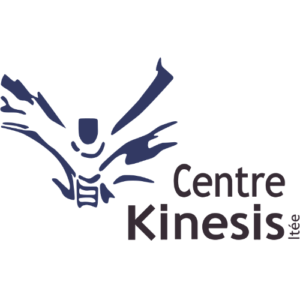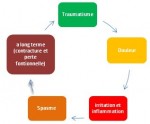Understand the pain!
Much more than just an unpleasant sensation, pain bothers many people, but it is nevertheless a necessary evil. A real alarm system, it protects us by informing us of injuries or potential lesions. According to the ISAP (International Association for the Study of Pain), “Pain is an unpleasant sensory and emotional experience, related to actual or potential tissue damage, or described in terms of an injury. »
Different types of receptors are present in the body to receive information from the outside (temperature, pressure, stretching receptors, etc.). These receptors send a message to the brain (sensory afferent impulse) and the latter reacts via an efferent impulse. motor which will cause a reflex movement of withdrawal (rapid and involuntary movement, as when removing the hand from the fire) or a change in body position.
The causes of pain:
It can be caused by trauma (direct blow, sprain, wound, burn, shock), illness or irritation of a nerve. Following this trauma, the body will act as a protective mechanism in order not to aggravate the injury and to be able to begin the healing process. The human body has the ability to self-heal. To achieve this, it will use the cellular agents of the immune system to clean and disinfect the affected area.
For example, the intense pain in the lower back felt following a wrong movement is useful on several levels. First, it allows us to realize that a problem has arisen. This pain will cause a protective spasm of the soft tissues (muscles, tendons, ligaments, fascia, skin) surrounding the injury and sometimes edema (swelling) in the joint. This protective mechanism is generated by inflammation (we will talk about it in another column) and aims to restrict our activities, limit our movements and get us to rest so that we can recover. Stopping the activity or movement causing the pain is also a guarantee of safety since it helps prevent us from making the problem worse.
The initial inflammatory process can be present for up to 72 hours depending on the severity of the injury.
The perception of pain intensity is unique to each person and varies depending on personality, culture, state of mind, level of stress and personal well-being.
Knowing that inflammation is necessary to start the healing process, we can ask ourselves if our quest to eliminate it quickly is ideal.
Our first reaction is to try to block the sensation of pain by taking muscle relaxers, anti-inflammatories and applying ice.
It is imperative to ensure that we are not simply trying to mask the painful sensation, the warning signal to simply continue carrying out our activities, our sport or the repetitive gestures that are causing our problem. In our opinion, pain control should be primarily for the purpose of comfort while waiting to determine and resolve the initial cause of the problem and not to put a bandage on a wound to continue moving without taking the time to recover.
The protective spasm caused by the trauma will last as long as the pain is present. For example, if the pain is present for two to three weeks, the protection mechanism will last two to three weeks.
 When the protective mechanism is present for a long period of time, the nervous system adapts by modifying the programming of the soft tissues. Thus, the tissues are no longer able to regain all their flexibility since they will have been reprogrammed to function on a shorter length. If the fibers are shorter, we increase the risk of being trapped in the vicious cycle of chronic pain.
When the protective mechanism is present for a long period of time, the nervous system adapts by modifying the programming of the soft tissues. Thus, the tissues are no longer able to regain all their flexibility since they will have been reprogrammed to function on a shorter length. If the fibers are shorter, we increase the risk of being trapped in the vicious cycle of chronic pain.
For example, if the muscles that attach to the shoulder are shorter because their fibers have been retracted, the chances of becoming more irritated increase since the risk of impingement will also be increased. In addition, the nervous system becomes in a state called “neuro-facilitated” which means that a minimal irritating factor can generate a significant protective reaction. As if the nervous system becomes hypersensitive and hyper-reactive.
Eliane Bousquet
Osteopathy practitioner, sports massage therapist and director of the Kinesis Center
et
Yanic Szoghy
Sports physiotherapist and Director of the Kinesis Center




